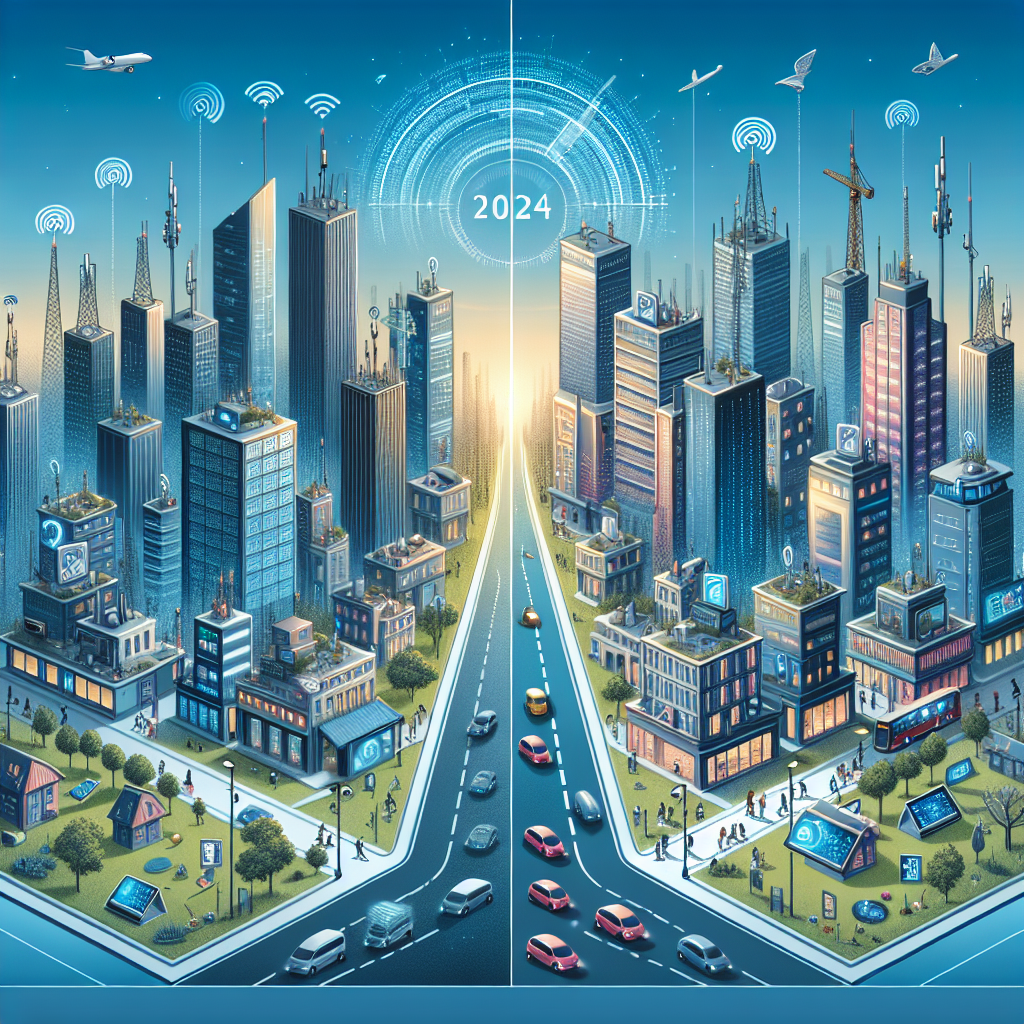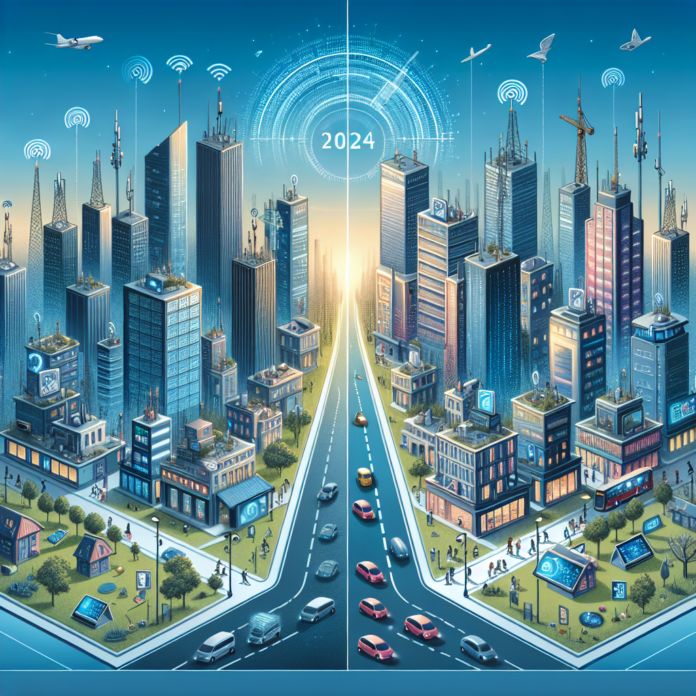
Introduction
As we step into 2024, the advent of 5G connectivity is set to redefine how we communicate, work, and interact with the world around us. Imagine a world where downloading a full-length movie takes seconds, real-time collaboration happens without lag, and smart cities operate seamlessly with interconnected devices. 5G is not just an incremental upgrade; it’s a transformative leap that promises to enhance our lives in ways we are only beginning to understand. In this article, we’ll explore the key trends driving 5G adoption, the technologies behind it, and the implications for individuals and industries.
1. Key Trends in 5G Connectivity
1.1 Enhanced Mobile Experiences
One of the most exciting aspects of 5G is its ability to provide lightning-fast mobile internet speeds. Picture streaming high-definition videos without buffering, engaging in high-quality video calls, and playing online games with virtually no lag. As mobile experiences become increasingly immersive, consumers are demanding faster and more reliable connectivity. The enhanced performance of 5G is meeting these demands, ushering in a new era of mobile entertainment and communication.
1.2 IoT Expansion
5G connectivity is the backbone for the explosive growth of the Internet of Things (IoT). With its ability to connect a vast number of devices simultaneously, 5G enables smart homes, wearable tech, and industrial automation to flourish. Imagine a smart city where traffic lights communicate with vehicles, optimizing flow and reducing congestion—this is the potential of IoT powered by 5G. As more devices come online, the interconnectedness of our daily lives will increase exponentially.
1.3 Remote Work and Collaboration
The COVID-19 pandemic accelerated the shift toward remote work, and 5G is poised to enhance this trend. With faster internet speeds and reduced latency, remote collaboration becomes more effective. Imagine a virtual meeting where everyone can share high-definition screens, participate in augmented reality brainstorming sessions, and collaborate seamlessly—5G technology enables this level of interaction. Businesses that adopt 5G can significantly improve productivity and employee engagement.
2. The Technology Behind 5G
2.1 Increased Bandwidth and Speed
5G technology offers increased bandwidth and speed compared to its predecessors. While 4G networks provided speeds up to 100 Mbps, 5G is designed to deliver speeds exceeding 10 Gbps. This significant leap allows for faster downloads, smoother streaming, and a more responsive online experience. Imagine downloading an entire season of your favorite show in seconds—this capability transforms how we consume content.
2.2 Lower Latency
Latency, the delay before a transfer of data begins, is significantly reduced with 5G. With latency as low as one millisecond, 5G supports real-time applications such as remote surgery and autonomous vehicles. Picture a doctor performing a procedure from hundreds of miles away, guided by real-time data—this capability highlights the life-changing potential of 5G technology. Low latency will enable innovations in various fields, from healthcare to entertainment.
2.3 Network Slicing
One of the most innovative features of 5G is network slicing, which allows operators to create multiple virtual networks within a single physical network. Each slice can be optimized for specific applications, such as IoT devices, video streaming, or emergency services. Imagine a scenario where emergency responders have a dedicated network slice that guarantees reliability and speed during a crisis—this level of customization enhances the efficiency and effectiveness of various services.
3. Challenges and Considerations
3.1 Infrastructure Development
The rollout of 5G requires significant investment in infrastructure, including new cell towers and fiber optic networks. Urban areas may see rapid deployment, but rural regions could lag behind, raising concerns about equitable access. Picture a landscape where some communities benefit from cutting-edge technology while others remain in the digital dark—addressing these disparities is crucial for ensuring that all individuals can access the benefits of 5G.
3.2 Security Concerns
As with any new technology, 5G introduces security challenges. The increased number of connected devices expands the attack surface for cyber threats. Organizations and consumers must prioritize cybersecurity measures to protect sensitive data and infrastructure. Imagine a scenario where a smart city’s systems are compromised, leading to chaos—ensuring robust security protocols is vital for building trust in 5G technology.
3.3 Regulatory and Policy Issues
The rapid development of 5G technology presents regulatory challenges that governments and industry stakeholders must navigate. Ensuring compliance with safety standards, managing spectrum allocation, and addressing privacy concerns are all critical issues. Picture a future where regulations keep pace with innovation, ensuring that 5G deployment is safe and equitable—this balance is essential for fostering growth and public confidence.
Common Questions About 5G Connectivity
- 1. What is 5G technology?
- 5G is the fifth generation of mobile network technology, offering faster speeds, lower latency, and the ability to connect more devices simultaneously.
- 2. How will 5G impact daily life?
- 5G will enhance mobile experiences, support IoT growth, and improve remote work collaboration, transforming how we communicate and interact.
- 3. What are the main benefits of 5G?
- Key benefits include increased bandwidth, reduced latency, and network slicing, enabling real-time applications and improved user experiences.
- 4. What challenges does 5G face?
- Challenges include infrastructure development, security concerns, and regulatory issues that must be addressed for successful implementation.
- 5. How can 5G benefit businesses?
- Businesses can leverage 5G to improve productivity, enhance customer experiences, and support innovative applications in various industries.
Conclusion
The rise of 5G connectivity is not just a technological advancement; it is a transformative force that has the potential to reshape our lives, industries, and communities. By embracing the opportunities and addressing the challenges of this new technology, we can create a future that is more connected, efficient, and innovative. Let’s embark on this exciting journey into the world of 5G, harnessing its potential to improve communication and foster progress. The future is here, and it’s powered by 5G!





